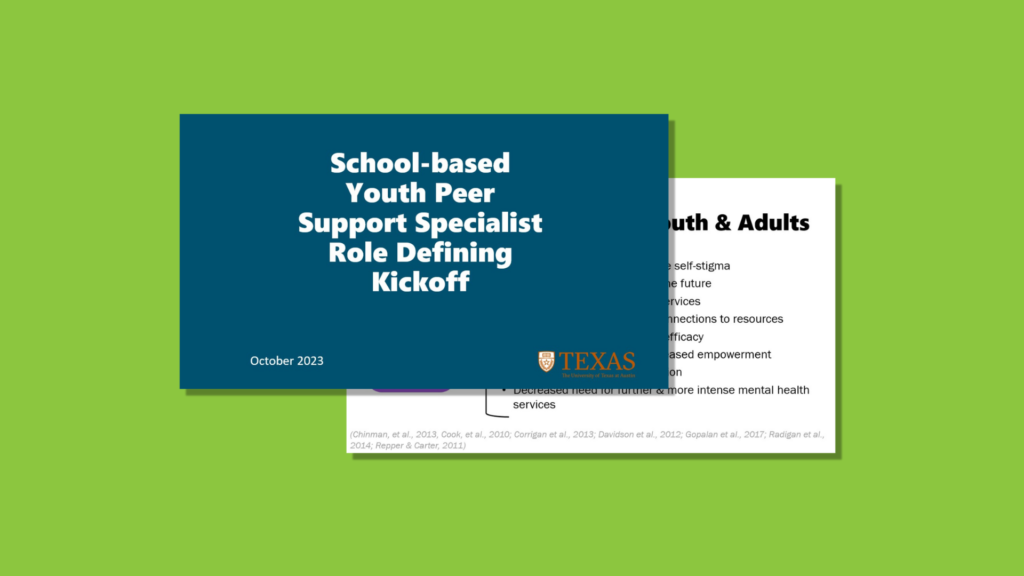Texas System of Care (TxSOC) is a state-wide initiative that aims to improve mental health outcomes for children, youth, and their families by implementing the system of care framework. The Texas Health and Human Services Commission (HHSC) leads TxSOC, with implementation supported by the Texas Institute for Excellence in Mental Health (TIEMH) and in collaboration with families, youth, advocates, providers, and child-serving state agencies. One of its focus areas is engaging and supporting transition-age youth, which is where the school-based Youth Peer Support role comes in.
Vanessa Klodnick, PhD, LCSW, a Research Scientist at TIEMH, recently discussed the Youth Peer Support Specialist role during the TxSOC office hours to define the position with help from the team. Before diving into group discussions, she explored a few key philosophies around peer support and what “peerness” can look like to different people.
“There’s something really valuable about young people getting together and doing positive activities— listening to each other, helping foster belonging, getting connected to services, and finding social groups.”
–Vanessa Klodnick, PhD, LCSW, Research Scientist, TIEMH
Introducing the youth peer support role
Rooted in elements like mutual connection, respect, shared responsibility for healing, and self-knowledge, the peer support role is different from many helping relationships, such as therapy and psychiatry, which have little to no mutuality.
Peer support specialists who are close in age to young students help fill an important gap. At times, well-intentioned clinical providers can’t relate to young people the way a person with lived experience can. According to research¹, youth support can help promote belonging, boost inspiration, increase knowledge about mental health services, decrease isolation, and more.
Expanding the definition of “peerness”
Although “peerness” is typically defined as interactions between people who’ve shared similar experiences of being diagnosed with mental health conditions, it can also include connecting over other aspects such as identity, childhood experiences, goals, hobbies, and youth culture.
Dr. Klodnick points out that peerness is about building a relationship and helping people feel like they’ve got someone who understands them.
The System of Care team discusses ideas for the peer support role
Here are some topics that were brought up during the group conversation:
- Creating a space for youth peer support specialists that’s more flexible than a weekly session
- Brainstorming a way for older students to support younger students (for example, a high schooler helping a middle schooler)
- Fostering a sense of community between near-age peers and students where they can connect and work through issues together (while maintaining boundaries)
We look forward to continuing the conversation about Youth Peer Support and gathering feedback from community sites as well as peer support specialists and supervisors.
To keep up with TxSOC’s initiatives, subscribe to our newsletter below!
¹Chinman, et al., 2013, Cook, et al., 2010; Corrigan et al., 2013; Davidson et al., 2012; Gopalan et al., 2017; Radigan et al., 2014; Repper & Carter, 2011)

Leave a Reply